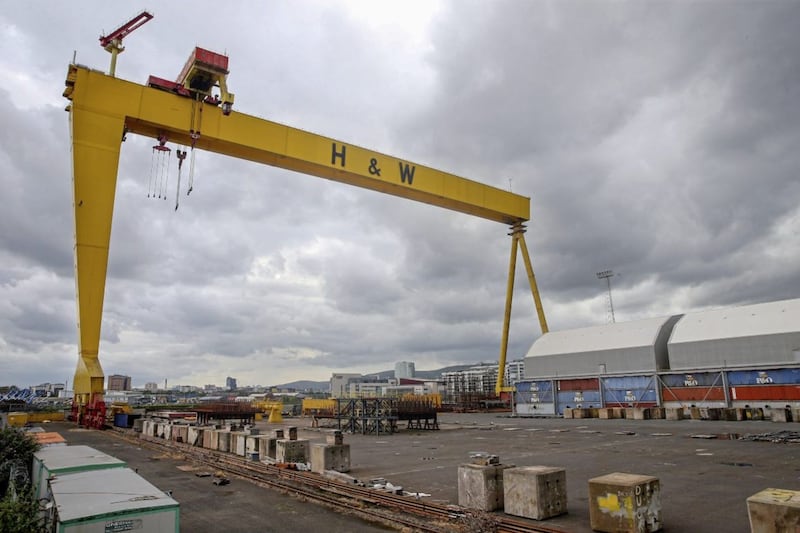MUCH has already been written about the challenges of the high street and the reinvention of retail. But with the decline of Harland & Wolff, there is also now a focus on Belfast’s industrial zone.
Industry was in decline many years before retail, and therefore such sectors are in some respects one step ahead when it comes to reinvention. The Titanic Quarter is a prime example.
It started with the Odyssey complex, and was followed by hotels, the world renowned Titanic Belfast, Titanic film studios, Titanic Exhibition Centre, Belfast Met, PRONI, the Gateway building, and other commercial operations including leisure, offices, showrooms and warehouse space. Belfast Harbour Commissioners in conjunction with the private sector have been instrumental in driving this reinvention.
As our towns and cities are redefined, the partnership between the public and private sectors has never been more important. Government can and should intervene when they have the power to do so if the community and economy will benefit. Our towns and cities need to keep pace with our changing lifestyles, while celebrating and protecting the institutions that make each place unique.
The twin shipbuilding cranes of Samson and Goliath are synonymous with the Belfast skyline and whatever the future holds for the shipyard, these iconic landmarks are protected as monuments of regional importance to Northern Ireland, under the Historic Monuments and Archaeological Objects (Northern Ireland) Order 1995.
The built heritage is one area that makes each city unique. Policy makers need to develop a planning policy and legislation robust enough to protect that heritage but also flexible enough to ensure that our towns and cities are reinvented and continue to evolve. While this creates a real challenge for town and city centres, we believe it is an opportunity for regeneration and place making.
Regeneration is an opportunity to differentiate our towns and cities from elsewhere and to create new communities, by encouraging more city centre living, build-to-rent schemes and alternative uses that incorporate leisure facilities, health and care provision, entertainment and community space for all age groups. However, this will only be possible through continued public and private sector collaboration and investment, which is essential to making our future towns a success.
The public sector first needs to determine the vision for our towns and cities and then the private sector need to implement that vision. Determining the vision has started with the recent Strategic Innovation Lab organised by the Department of Finance, Department of Communities and Department of Infrastructure.
Despite differing ideas, competing interests and lack of resources, common themes emerged from that process. However, more public law powers are needed to facilitate invention, which can often be frustrated by process, procedural and regulatory requirements such as state aid, fiduciary duty, procurement and planning. But with expert advice and a will, the vision can be achieved.
All those invested in town centre regeneration - from local authorities and commercial property owners to occupiers and developers – should bring forward complex development projects as well as the regeneration of existing buildings and spaces through public/private partnerships.
:: Julie Galbraith (julie.galbraith@dwf.law) is partner/head of retail food and hospitality at DWF Belfast (www.dwf.law)









